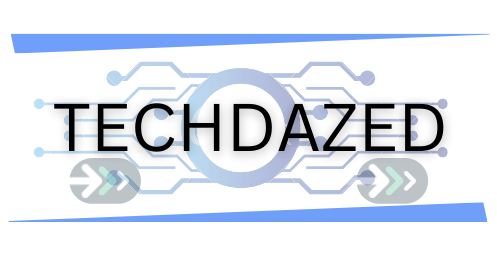In an increasingly digital world, security management has become a critical aspect of safeguarding sensitive information and ensuring the smooth operation of organizations. With the rise in cyber threats and data breaches, implementing effective security strategies and best practices is essential for maintaining customers’ trust, protecting valuable assets, and avoiding potentially catastrophic consequences. In this blog, we will delve into the key strategies and best practices in security management that organizations should adopt to mitigate risks and maintain a robust security posture.
Understanding the Landscape: The Need for Comprehensive Security
Before diving into specific strategies, it’s crucial to recognize the evolving security landscape. Cyber threats have grown in complexity and frequency, ranging from ransomware attacks to phishing scams and insider threats. Thus, organizations must adopt a comprehensive approach to security management that covers technological measures and human behavior, policies, and procedures.
Risk Assessment and Management
The foundation of effective security management is a thorough understanding of an organization’s vulnerabilities and potential risks. Conducting regular risk assessments helps identify weak points in the security infrastructure. These assessments can be technical, examining vulnerabilities in software and hardware, or non-technical, focusing on policies, procedures, and human behavior.
Once risks are identified, organizations can prioritize them based on potential impact and likelihood. This allows for the allocation of resources to mitigate the most critical risks first. Regular updates to risk assessments ensure that new threats and vulnerabilities are promptly addressed. Professionals skilled in security management can help with identifying and managing risks.
Aspiring professionals can enroll in a masters in security management to better understand risk assessment and management techniques. The program will teach students how to identify potential threats, assess a security system’s strengths and weaknesses, analyze risk factors, and develop strategies to address vulnerabilities.
Multi-Layered Defense
Relying on a single security measure is akin to putting all your eggs in one basket. A multi-layered approach involves deploying multiple security mechanisms at different levels to create overlapping layers of defense. This approach minimizes the chances of a single point of failure compromising the entire security system.
Layers can include firewalls, intrusion detection and prevention systems, anti-malware software, encryption, and access controls. For instance, combining network perimeter defenses with endpoint security solutions can protect against various attack vectors.
Employee Training and Awareness
Human error remains a leading cause of security breaches. Regular employee training and awareness programs are essential to instill a security-conscious culture within the organization. Employees should be educated about phishing threats, social engineering tactics, password hygiene, and safe browsing practices.
Simulated phishing exercises can be used to assess the organization’s susceptibility to social engineering attacks. Regular training sessions and updates ensure employees are well-informed about emerging threats and best practices.
Strong Authentication and Access Controls
Implementing strong authentication methods, such as multi-factor authentication (MFA), helps prevent unauthorized access to systems and data. MFA requires users to provide multiple pieces of evidence before granting access, significantly enhancing security.
Access controls are equally important. Limiting access to sensitive data and systems based on job roles and responsibilities ensures that only authorized personnel can access critical resources. Regularly reviewing and updating access privileges is essential to prevent unauthorized access.
Regular Software Patching and Updates
Unpatched software is a common entry point for cybercriminals. Organizations must establish a process for regular software patching and updates to address known vulnerabilities. This includes operating systems, applications, and firmware.
Automated patch management tools can help streamline the process and ensure that security updates are promptly applied. Delayed or neglected patching can leave systems vulnerable to exploits that software vendors have already addressed.
Incident Response Planning
An incident response plan outlines roles and responsibilities, communication protocols, and steps to take when an incident occurs. Regularly testing and updating this plan ensures all stakeholders are prepared to respond effectively in a crisis.
Data Encryption
Data encryption is a powerful tool for protecting sensitive information. Encryption converts data into unreadable ciphertext that can only be deciphered with the appropriate encryption key. This means that the stolen data remains useless even if a breach occurs without the encryption key.
Encrypting data both in transit (while it’s being transmitted between systems) and at rest (when it’s stored on servers or devices) is essential for maintaining data confidentiality.
Vendor and Third-Party Risk Management
Many organizations rely on third-party vendors and partners for various services. However, these relationships can introduce security risks. Organizations should assess the security practices of their vendors and ensure that they adhere to similar security standards.
Vendor risk assessments should be conducted before engaging in partnerships, and ongoing monitoring should be in place to ensure that vendors continue to meet security requirements.
Continuous Monitoring and Threat Intelligence
Security threats evolve rapidly. Continuous monitoring of networks and systems allows organizations to detect and respond to potential threats in real time. This involves analyzing network traffic, monitoring system logs, and using intrusion detection systems.
Threat intelligence involves staying informed about emerging threats and vulnerabilities. This can be achieved through partnerships with cybersecurity organizations, sharing information with industry peers, and subscribing to threat intelligence feeds.
Compliance and Regulation Adherence
Many industries are subject to regulatory standards that require specific security measures and data protection practices. Adhering to these regulations is essential for avoiding legal consequences and maintaining the trust of customers and stakeholders.
Organizations should stay up-to-date with relevant regulations, such as the General Data Protection Regulation (GDPR) or the Health Insurance Portability and Accountability Act (HIPAA), and ensure their security practices align with the requirements.
Also Read: Different Types Of Robotic Arms And When To Use Them
Conclusion
Security management is an ongoing effort that demands a holistic approach. By combining technical measures, employee education, and robust policies, organizations can create a strong defense against cyber threats. The strategies and best practices discussed in this blog provide a solid foundation for establishing and maintaining a secure environment. Regular assessment, updates, and collaboration with security experts are key to avoiding emerging threats and protecting valuable assets. With a commitment to security and a proactive approach, organizations can confidently navigate the digital landscape and ensure the safety of their data and operations.

